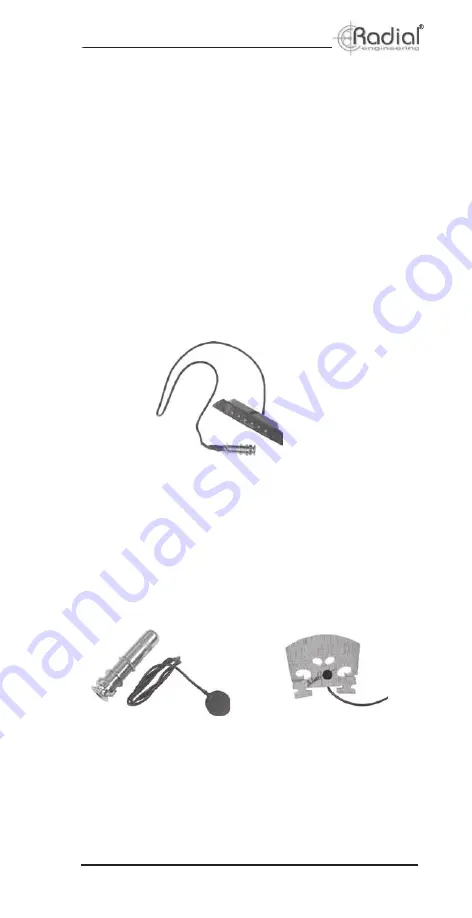
True to the Music
Radial Engineering Ltd.
PZ-Pre
™
User Guide
INSTRUMENT CONNECTIONS
Because the PZ-Pre can accept different kinds of pickups it’s
important to identify which type of pickup your instrument is
equipped with. Typical pickup systems include:
1. Magnetic (passive)
2. Piezo transducers (passive)
3. Magnetic or piezo with on-board preamp (active)
4. Combination magnetic and/or piezo with split output
Magnetic Pickups (Passive)
These types of pickups are sometimes mounted in the sound
hole of an acoustic guitar. They are referred to as passive
pickups because there are no electronics between the pickup and
instrument output jack. Magnetic pickups connect directly to the
PZ-Pre with an instrument cable. (PZB not required)
Piezo Transducers (Passive)
Piezo transducer pickups can be permanently mounted inside
an instrument, embedded in the bridge or attached to the sound
board with double sided tape. A piezo is considered passive when
there are no active electronics between the transducer and the
instrument output jack. The piezo transducer pickup converts
vibration into a very small electrical current. The current a piezo
produces is so small that it needs a specially designed amplifier
or buffer to increase the signal to a workable level.
The PZ-Pre is equipped with a piezo buffer (PZB) on each input to
ensure the best possible tone from passive piezo pickups. When
connecting a piezo pickup to the PZ-Pre you should engage the
PZB for the input you’re connecting to. Set the switch to its 'inward'
position to engage the PZB.
9





































